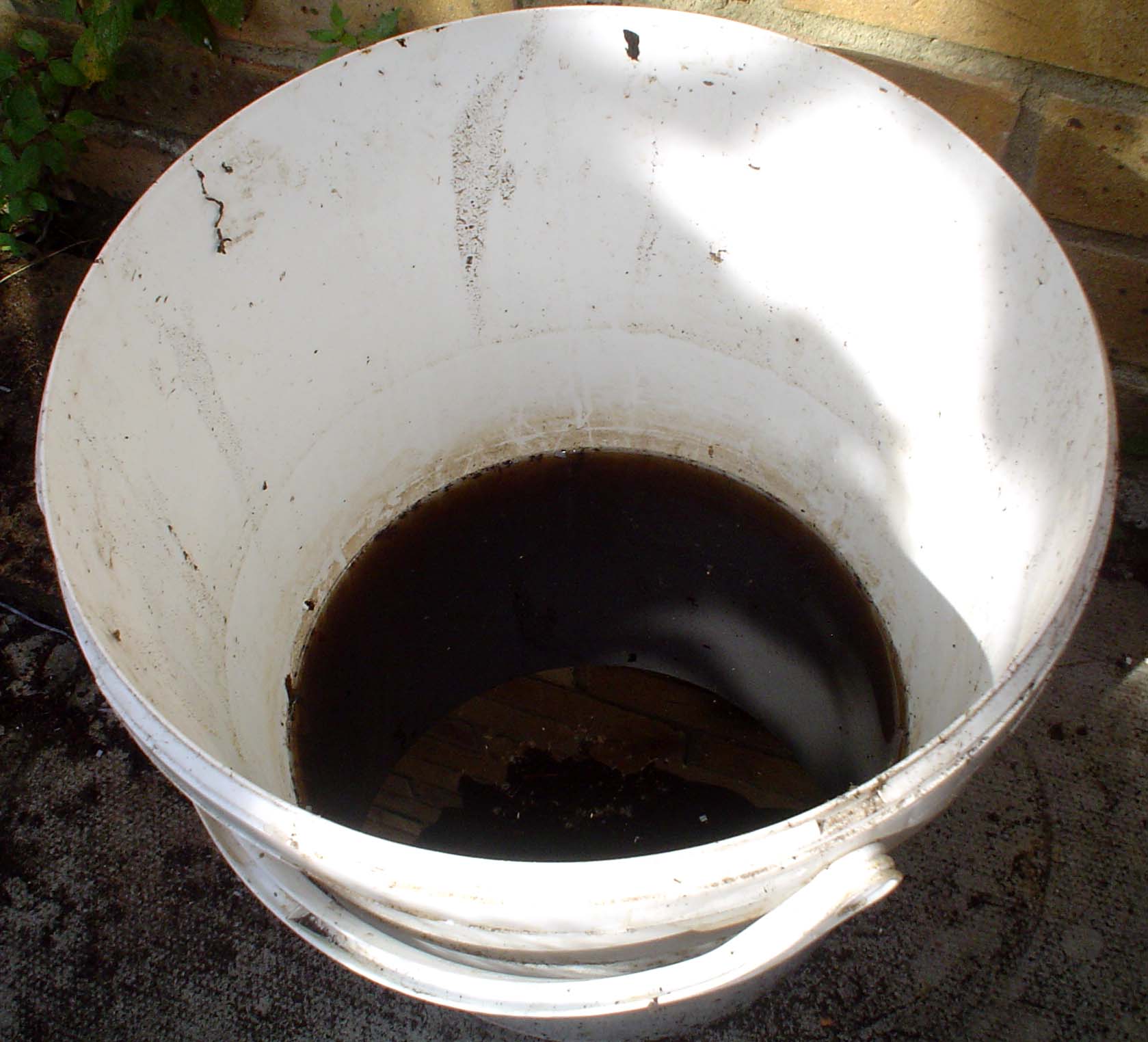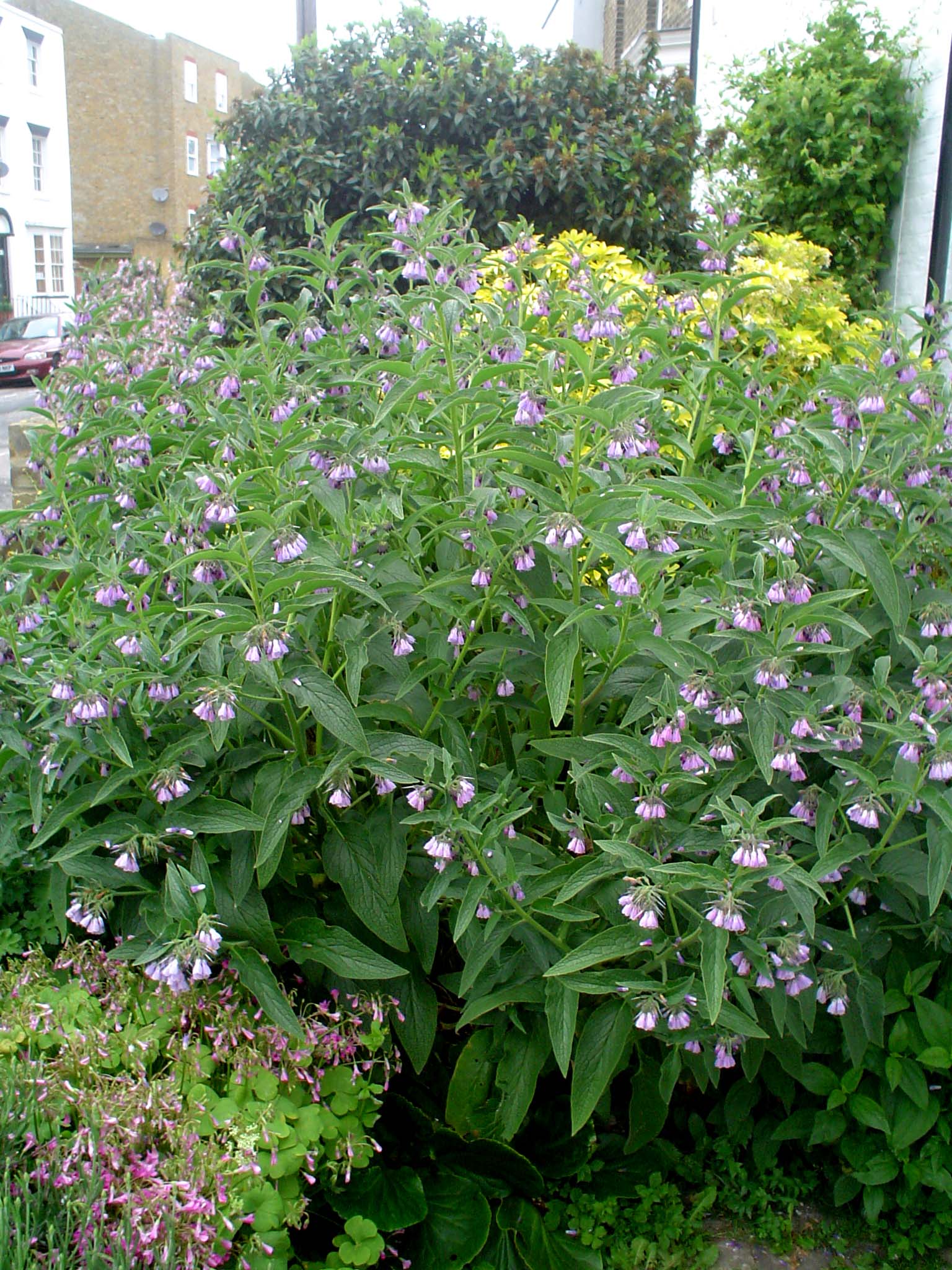Comfrey tea (for your plants, that is)

| Every garden should have a comfrey plant. Comfrey is a perennial that doesn’t need a lot of TLC, and bees absolutely love comfrey flowers. But the best thing about comfrey is the fact that it sucks up soil nutrients, which end up in the leaves. So when comfrey leaves are added to your compost heap, they make the compost all the richer. I chopped back our comfrey plant (see below) a few weeks ago because some high winds had flattened the stalks. I put some of the stalks/leaves in our compost bin, but there wasn’t room for the rest so I used a bin bag for the overflow, left it in a corner of our back garden and forgot about it. |  |
Then a couple of days ago, I noticed a black, crude oil-like ooze coming from the bottom of the bag. But rather than bemoan the brown stain on the paving, I did a little happy dance! That “crude oil” was a fabulous fertiliser. The inside of the bag was a mass of tarry, half-decomposed stalks which had rotted down quite a bit, so I could now fit them into our compost bin. The inside of the bag was covered in goo, so all I did was fill a bucket with water and wash the bag out in the bucket. Ta-da! Comfrey tea. Not for human consumption I hasten to add, but diluted with about five more parts of water and used on our tomatoes and courgettes. (Like bees, tomatoes love comfrey.) You can also make comfrey tea by putting fresh comfrey leaves in a bucket, filling it with water and weighing the contents down with some large stones. After a few weeks, you’ll have a mixture that smells foul (think toilets), but which again, plants adore when diluted with ten parts water.
|

|
